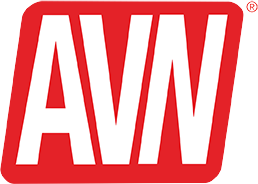Affiliate programs provide the lifeblood of many adult Internet operations. Regardless what a webmaster wants to sell or promote, chances are good he can find an affiliate program offering it, sign up, promote the program on his website, and begin raking in the dough.
For a variety of reasons, though, sometimes an affiliate program just isn’t the right “fit” for a Web operation. In cases where a website is associated with a recognized brand, the webmaster has worked long and hard to build a rapport with his or her users, or the website serves an especially narrow niche market, affiliate programs may be too broad or too restrictive. The brands may clash. Customers may not feel as comfortable dealing with a third party as they do with a website they’ve grown to trust.
What to do?
In recent years, one of the more appealing options has become to work with a company that provides so-called “white-label” services. In Internet terms, a white-label program is one that allows webmasters to offer a third-party product or service under the guise of their own brand. White-labeling can be as simple as changing the colors and banners on a Web-based product to reflect the client website’s look and feel, or it can be as involved as customizing the user interface and product offering from top to bottom in order to make it appear as though users are buying from the website with which they already have a relationship—instead of from a sub-contractor. In the end, many webmasters find utilizing a white-label solution less time-consuming and expensive than—but just as lucrative as—creating their own proprietary channel from the ground up.
The range of products and services available under white labels spans the spectrum of ancillary products and services in which webmasters may be interested: stores (toys, DVDs, clothing, gifts, fetish accessories, etc.), video-on-demand, cellular accessories like ring tones and wallpapers, herbal products, games and other software, domain registration and hosting, news and feature content, website and product reviews, credit reports, billing services, travel, dating, chat and live video, erotic fiction, and casinos, poker rooms, and bingo halls are only a few of the categories in which white-label solutions are available.
Defining the terms
Confusion about “white labeling” among rank-and-file webmasters often is in the associated terms. Traditionally, “white label” has been used by the music industry to indicate a promotional copy of a new release. In the days when music was released on vinyl, white-label recordings were intended for use by disk jockeys, and the records bore a plain, white label with little information as a way of indicating they were not the final, commercial version.
On the Web, “white label” has come to mean a way one company can “stealth market” another company’s product under its own banner. The most basic white-label programs allow a webmaster to change the color scheme, banners, and other cosmetic aspects of an affiliate program’s marketing pages to match the appearance of the affiliated website. Generally, it remains apparent that surfers are dealing with a third-party provider once they begin shopping or interacting with a basic white-label site. All billing and customer service is handled by the provider, the URL usually resembles an affiliate linking code, and webmasters are paid just like any other affiliate is paid.
An intermediate link in the chain may be called “co-branded” sites. These are more complete websites webmasters can incorporate into their operations. Most often, they’re hosted by the provider and bear both the provider’s and the client’s logos and marketing messages, and they sometimes bear a URL indicating both companies’ roles in their marketing and maintenance. The provider and the client share the revenues, but all the client has to do is market the product. The provider handles billing, customer service, and any shipping, staffing, or content requirements.
The most advanced option (perhaps most appropriately called “private label”) allows webmasters to customize most aspects of what surfers see, like product offerings, contact email addresses, billing options, and sometimes even the way traffic flows through the white-labeled site. In essence, a private-label site is a complete package that’s custom-designed to order. Providers usually share in the revenue generated by private-label sites, although they may or may not handle billing, hosting, and customer service. The provider always handles order fulfillment, content, and staffing, although some private-label sites incorporate ways for clients to contribute to the product mix (like cam girls and personal ads) across a network of similar private-labeled sites.
An important distinction between basic white-label packages and more advanced ones is that typically webmasters using a private-label site at least co-own any databases that result from customer interaction; with basic white-label sites, databases are the property of the white-label provider. For that reason, private-label sites generally only are available to webmasters who can provide a significant revenue stream for the private-label provider. After all, data translates into revenue, so companies that provide lower-level, white-label programs consider the data they generate part of their compensation for providing the service.
Made to order
Who should consider a white-label solution? The question is easier asked than answered, but generally, white-label products are most appropriate for companies that have established a significant brand presence and attract significant traffic to their websites. “White-label solutions give additional value to branded operations by offering customers something extra that looks professional and works well out of the box,” says Ben Jelloun, president of InterClimax, which offers live video chat in a white-label format. “You can put your brand and your ‘look’ on a white-label program, and nobody will be able to tell it’s not yours.”
White-label solutions can present a number of advantages for companies that use them appropriately, according to Mike M., chief executive officer of IwantU.com, which offers white-label, private-label, and affiliate programs in the dating realm. “Webmasters who use a white-label or private-label solution can customize the site to their niche, which means higher conversion rates. Webmasters know best what their surfers want,” he says. “White-label products increase their brand’s value and reach, and they allow webmasters to control how they’re implemented and presented, including aspects like the domain name, hosting relationships, and even the billing mechanism.”
Ari Suss, president of XR LLC, concurs, adding “there’s no need to deal with the hassle of stocking or shipping any products or dealing with any customers, but consumers think they’re buying from you.” XR LLC operates the NicheShops program, which provides white-labeled fetish, gay, and high-end-toy stores online.
Not everyone is approved to participate in some white-label programs. Intimately customized private-label sites, for example, are expensive to create, since the provider must employ staff members to work with the client webmaster in order to get the look and “feel” of the private-label site to match the client’s (and his surfers’) needs. For example, Suss says 95 percent of XR LLC’s affiliates use one of the company’s three stores as it stands. “It meets a basic need for them: to offer their users good products, discreet and reliable shipping, and friendly customer service,” he explains. “They just put up the affiliate linking codes to the stores as they are—or to specific products within the stores—and that works well for them and their surfers. We can always do more customization for those that bring in more revenue, though.” As a case in point, he cites AdultFriendFinder, which promotes a private-label version of XR LLC’s fetish store eXtremeRestraints.com to its fetish-dating users. In return, eXtremeRestraints.com employs a private-label version of FriendFinder’s fetish dating site at Alt.com. “We can’t do that sort of thing for everyone, because it takes time and manpower,” Suss says. “It can take a few months just to do the programming for [a site like the one customized for FriendFinder].”
However, most of the major affiliate programs will work with heavy-hitting affiliates to design at least a basic white-label program. Some companies in the mobile space specialize in white-label solutions for delivering content, and because that field is so new, webmasters of almost any size can take advantage of them.
Making it work
Finding the perfect white-label solution to meet one’s needs requires a bit of research. Once a webmaster has determined a white-label relationship will be beneficial (see the sidebar “White Label or Affiliate Program?”), there are several criteria to consider before sealing the deal.
“When [webmasters] look for a co-brand solution, I suggest they look for several things,” says Mike M. “They need the most flexibility possible—full control of the HTML pages, if possible. They need control over what happens to the traffic and how the members database is managed. For our private-label solution, since the members database belongs to the affiliate, we offer extensive tools that allow them to download, export, and update member data. We give them a control panel and a set of [application programming interfaces] to better manage and understand their databases.”
Jelloun says that with white-label programs—like almost anything else—the devil is in the details. “[Webmasters] need to make sure the provider can make the program fit for them in every way that’s important to their overall goal,” he says. “Colors may seem like a small thing, but often they’re part of your brand identity. Niches are incredibly important in network settings. With our one-on-one chat product, for example, if the webmaster’s niche is blondes, we make sure the top girls that show up on his white-label product are blondes—not just whatever girls are showing up on everyone else’s interface. We also add a ‘tap’ that allows them to archive their own movies, pictures, and so on. If you’re really going for brand identity, customer service email addresses in your domain that can be routed to a customer service representative at the provider are beneficial, too.
“If you own your own content that’s going to become part of a network of white-label sites [meaning other webmasters can promote your content, especially where cam girls are concerned], find out how the accounting will be accomplished for that,” Jelloun continues. “You want to make sure your content is making you the most money it can. And, make sure the provider knows what he’s doing with 2257 documentation. That can be tricky when you’re dealing with any kind of images on a network. Make sure your attorney and [the provider’s] see eye to eye on who’s responsible for maintaining it, and then make sure you follow their advice.”
Suss adds a few more considerations. “What you don’t want is to be selling product that isn’t delivered properly and timely,” he says. “That hurts your credibility, not the provider’s. A white-label solution should add value to your site, not subtract from it. The ideal white-label solution allows webmasters to focus on what they do well, while the provider focuses on what it does well. Neither of you has to reinvent the wheel, but you both benefit from each other’s expertise.”
Mike M. adds, “The adult websites that will win tomorrow’s battle are the ones that can best capitalize on their traffic. In order to do so, you must offer a variety of services and products to your surfers. That’s where [white labels] come in.”









